How Long is the Great Wall of China Really? (And 7 Sections You MUST Visit)
Contents
- The Great Wall’s True Length: 21,196 km Demystified
- The 2012 National Survey: How China Measured the Impossible
- Ming Dynasty Wall: The 8,850 km Backbone of Your Visit
- 7 Unforgettable Great Wall Sections You Can Visit in China
- Badaling: The Iconic (But Crowded) Classic
- Mutianyu: Family-Friendly Scenic Bliss
- Jinshanling: A Hiker’s Photographic Paradise
- Juyongguan: History Buffs’ Hidden Gem
- Jiankou: The Raw, Untamed Adventure
- Huanghuacheng: Lakeside Serenity & Water Views
- Simatai: The Dramatic Nighttime Frontier
Show more
How long is the Great Wall of China?
The answer is staggering: 21,196 kilometers (13,170 miles) of history snaking across China’s northern frontier—from coastal Korea to the Gobi Desert.
Yet here’s the twist travelers rarely hear: only a bit over 8% of this ancient marvel remains visible today.
Why?
Centuries of erosion, wars, and even deliberate flooding (like Huanghuacheng’s submerged sections) have reclaimed much of the Wall.
And forget the myths: no, it’s not visible from space, and its official length includes trenches and natural barriers, not just stone.
But here’s what matters for your adventure:
The seven iconic sections near Beijing deliver the breathtaking views and stories you’re seeking. Whether you crave a family-friendly hike (Mutianyu), lakeside serenity (Huanghuacheng), nighttime adventure (Simatai), or wild hikes (Jiankou), this guide breaks it all down.
Ready to walk through humanity’s most extraordinary engineering feat? Let’s begin.
For many years, the Wall’s length was widely debated, ranging from 5,000 km to the mythical "50,000 km". In 2012, China’s cultural authorities ended speculation with science. Here’s what the data reveals.
After a 5-year, province-by-province investigation involving 43,721 heritage sites, China’s SACH announced the definitive length:
✅ 21,196.18 km (13,170.7 miles).
While the Wall began in the 7th century BCE, the Ming era (1368–1644) built what tourists see today. Why it dominates:
| Feature | Ming Wall | Older |
| Structure | Fired bricks + mortar | Rammed earth (crumbles) |
| Design | Standardized watchtowers | Irregular mounds |
| Accessibility | 90% near Beijing | Remote (e.g., Xinjiang) |
| Visitor-ready | 12 fully restored segments | 0 restored sections |
Travel truth: When guides say "the Wall is 8,850 km long", they mean only Ming structures – your actual hiking terrain.
Within a 3-hour drive of Beijing, seven Wall segments offer wildly different experiences—from family-friendly strolls to cliffside adventures. These sections are where history meets hiking boots.
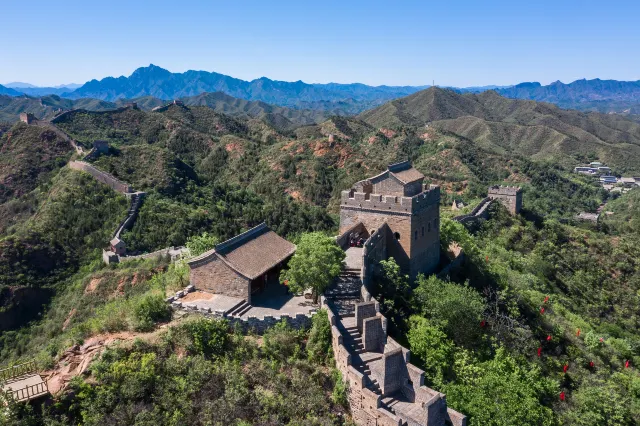
Badaling isn’t just a tourist site—it’s where Ming Dynasty engineers perfected defensive warfare. Built in 1505 under Emperor Hongzhi, this section guarded the Juyong Pass, a critical northern gateway to Beijing. Watchtowers positioned at arrow-shot intervals (200m) allowed overlapping fields of fire.
Diplomatic theater: From Nixon’s 1972 walk to 500+ world leaders' visits, it’s a stage for global diplomacy.
Conservation benchmark: China’s first restored section (1957) pioneered techniques now used Wall-wide.
The trade-off: Crowds (peaking at over 70,000 daily) reflect its fame. Visit not for solitude, but to walk where empires clashed and history unfolded.
| Distance/Time | 70 km (from Wangfujin) NW of Beijing • Drive: 1–1.5 hrs |
| Public Transportation | Bus 877: Deshengmen Station → Badaling (70 mins) High-Speed Rail: Beijing North Station → Badaling Station |
| Hours | Summer: 6:30 AM–7 PM Winter: 7:0 AM–6 PM |
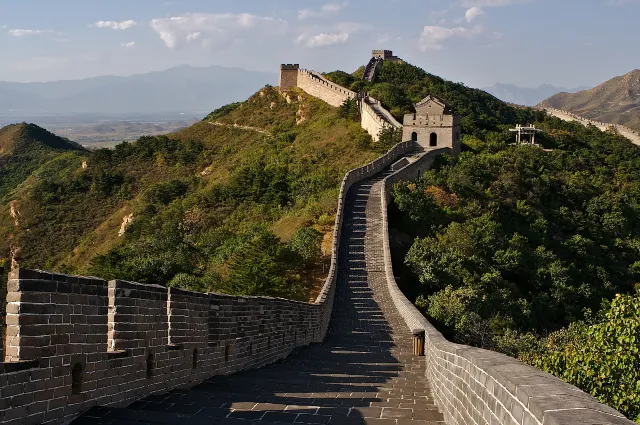
Key Features:
Matching Traveler Profiles:
✓ Ideal: First-timers, families with strollers/seniors (elevators available), history scholars.
✗ Avoid: Wilderness seekers or photographers wanting crowd-free shots (visit Mutianyu instead).
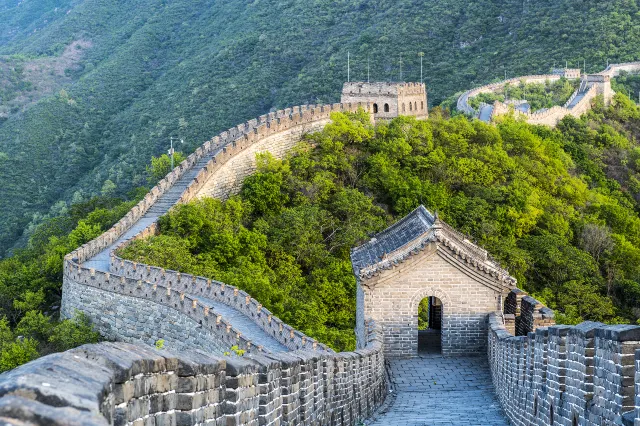
Mutianyu’s magic lies in its duality: a 14th-century battlefield transformed into a UNESCO-protected arboretum. Toboggans and cable cars ease access, but dawn hikes reveal the Wall’s primal spirit. Unlike Badaling’s stark militarism, here the Wall embraces the landscape:
Ecological Sanctuary: 90% forest coverage shelters 200+ bird species—listen to azure-winged magpies.
Cultural Layers: Built by General Xu Da in 1368, later expanded by Qi Jiguang (anti-pirate hero) in 1569.
Strategic Evolution: Design optimized for artillery sightlines.
Mutianyu’s name (慕田峪) means 'Valley of Admiring Fields' – a nod to its Ming-era apricot orchards. These military-operated groves provided supplemental food for soldiers, with surplus fruit sold to fund garrison supplies.
| Distance | 73 km NE of Beijing • Drive: 1.5–2 hrs |
| Public Transportation | Bus 867: Dongzhimen Wai → Mutianyu (2 hrs) Train + Taxi: Bullet train to Huairou (20 mins), then taxi (20-30 mins) |
| Hours | 7:30 AM–6:30 PM Toboggan closes at 5:30 PM |
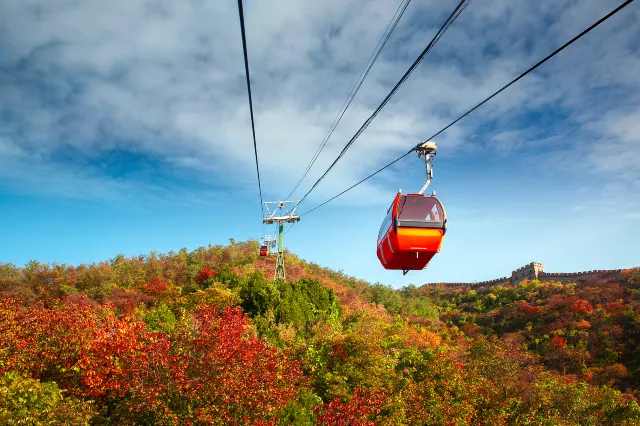
Key Features:
Matching Traveler Profiles:
✓ Perfect: Families (toboggan thrills), photographers (sunset at Tower 15), moderate hikers.
✗ Skip if: Seeking raw ruins (choose Jiankou) or dislike commercial amenities (cafes/shops onsite).
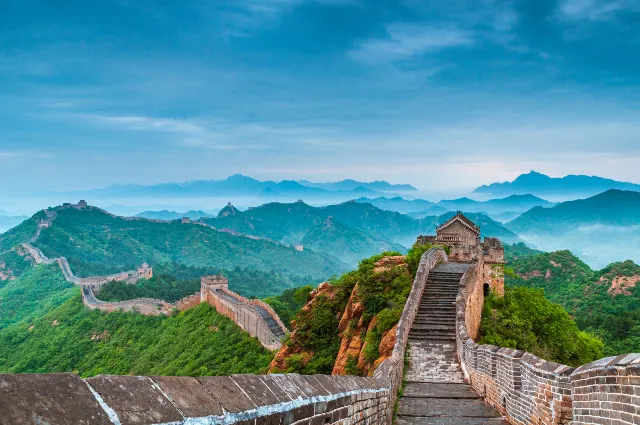
Jinshanling embodies the Great Wall’s tactical evolution during its most volatile era. Built in 1570 under General Qi Jiguang (a military genius who also designed Mutianyu), this section was the Ming’s answer to relentless Mongol raids. At dawn, mist snakes through the Wuling Mountains, backlighting watchtowers—a scene unchanged since Ming scouts lit beacon fires.
A Testing Ground for Innovation: 67 uniquely designed watchtowers—each experimenting with arrow-slits, trapdoors, and signaling systems.
Living Archaeology: Unlike restored sections, 60% remains "wild"—crumbling brickwork reveals soldier carvings and cannon soot from the 1550 Altan Khan invasions.
Conservation Philosophy: Since 1986, Sino-German teams pioneered "stabilized decay" here—preserving ruins without rebuilding, setting global standards.
| Distance | 154 km NE of Beijing • Drive: 2.5–3 hrs |
| Transportation | Private Transfer: Recommended |
| Hours | 6 AM–7 PM (summer), 7 AM–6 PM (winter) • Sunrise access allowed with ticket |
Sunrise Secret: Enter via Small Jinshanling Gate (opens 4:30 AM)—hike 20 mins to Tower 6 for fog-drenched panoramas.
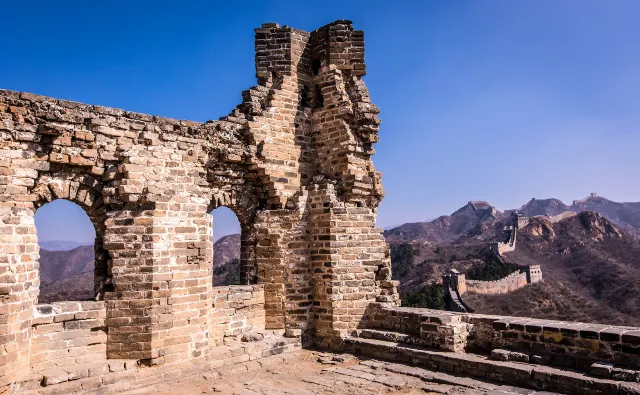
Key Features:
Matching Traveler Profiles:
✓ Perfection For: Serious hikers, photographers, history nerds.
✗ Avoid If: Traveling with young kids (unguarded drops).
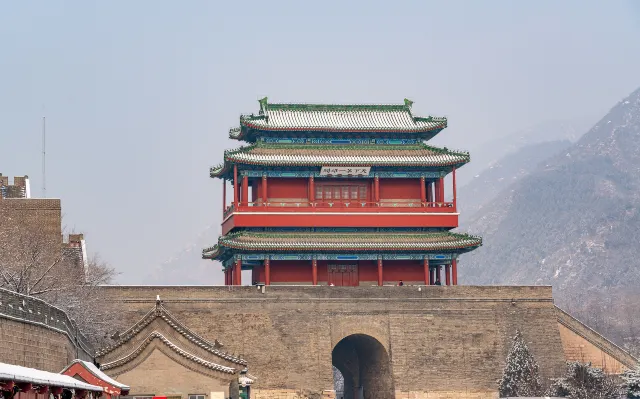
While others crown mountain ridges, Juyongguan dominates the lowest pass into Beijing—a valley fortress pivotal for 2,300 years. Walking its circular 4-km loop feels like traversing a live-action history scroll. Its layered history reveals China’s cyclical struggles:
Strategic Masterstroke: Flanked by 1,200m cliffs ("Jade Mountain"), compressing invaders into a 20m-wide kill zone—Genghis Khan lost many men here in 1213 CE.
Cultural Palimpsest: The Cloud Platform (1345 CE) displays Buddhist sutras in 6 scripts (Sanskrit, Tibetan, Uyghur)—a Silk Road relic from Mongol Yuan Dynasty tolerance.
Military Evolution: Ming cannons aimed north still line battlements—testaments to 1449 battles against Oirat Mongols.
| Distance | 60 km NW of Beijing (about 20 km from the Badaling section) Drive: 1 hr |
| Public Transportation | Bus 879: Deshengmen → Juyongguan (1.5 hrs) Train: Beijing North → Badaling Station, then taxi (20 mins) |
| Hours | 8:30 AM–5 PM (year-round) Closed Mondays (except national holidays) |
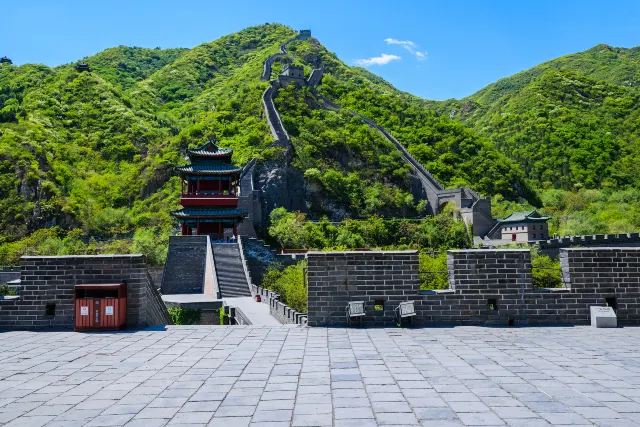
Key Features:
Matching Traveler Profiles:
✓ Ideal For: History scholars, architecture students, and experienced hikers.
✗ Not For: View chasers (ridges obstructed) or mobility-limited visitors.
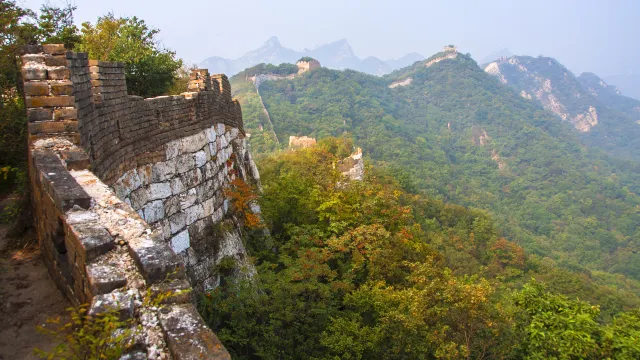
Jiankou ("Arrow Nock") is the Great Wall at its most primal—a crumbling, vertiginous spine that repels commercialization.
"Jiankou" name origin: Its V-shaped ridge resembles an arrow nock—visible from Tower 32.
A Living Classroom in Decay: Watchtowers tilt at gravity-defying angles, revealing Ming brickwork layers like geological strata.
Historical Turning Point: The 1986 collapse of Tower 38 sparked China’s "Wild Wall" conservation debate—leading to selective stabilization (not restoration) policies.
Spiritual Allure: Locals call it "Dragon’s Backbone"—hikers report eerie silence broken only by wind-whispers through arrow slits. The challenge: This is the Wall as its builders knew it—treacherous, majestic, and utterly untamed.
Fun Fact: The Collapse That Changed Conservation
When Tower 38 crumbled in 1987, Chinese archaeologists discovered Ming "quality control" bricks—each stamped with the builder’s name for accountability. This sparked laws protecting unrestored sections.
| Distance | 80 km NE of Beijing Drive: 2–2.5 hrs |
| Public Transportation | Bus 916 and H21 (H21 or the tourist line labeled "Huairou–Water Great Wall"; 2 hrs) |
| Hours | Open 24 hrs (but hiking past dusk is illegal and dangerous) |
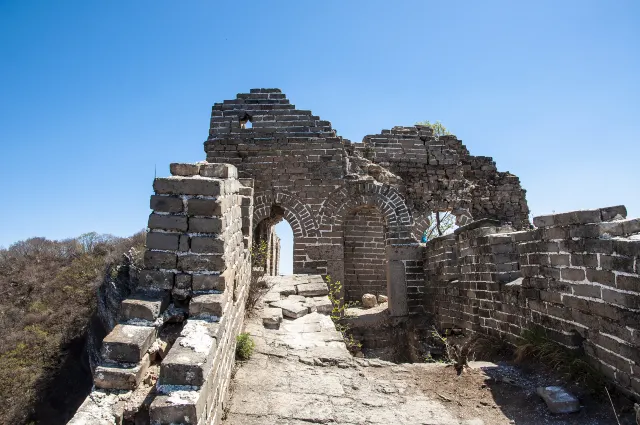
Key Features:
Best For: Adventure Seekers
✓ Essential For: Experienced hikers, authentic ruin explorers, thrill-seekers.
✗ Life-Threatening If: Attempted in rain (fatal slips occur), without GPS maps, or solo. HIRE A GUIDE!
Must-haves: gloves (for handling rusty handrails and rocks), headlamp, flashlight, hiking boots (not sneakers!).
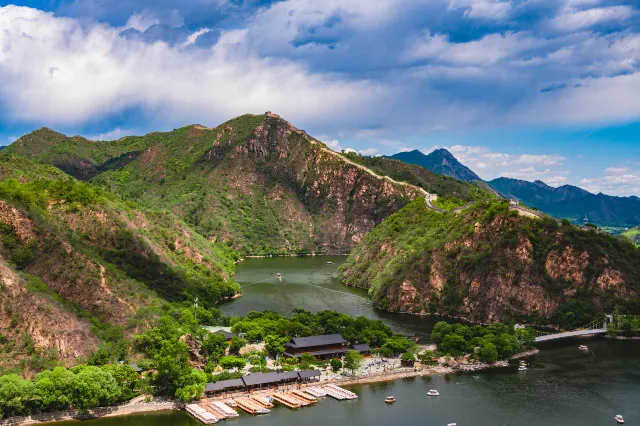
Huanghuacheng ("Yellow Flower City") redefines the Wall’s purpose—a Ming naval base where fortifications plunge into reservoirs. Crumbling towers overlook boats—a surreal blend of history and recreation. Constructed in 1404 under General Cai Kai, it creating moats that stalled Mongol cavalry.
iDi
| Distance | 80 km N of Beijing Drive: 1.5–2 hrs |
| Public Transportation | Bus H51: Deshengmen → Huanghuacheng |
| Hours | 8:30 AM–5:00 PM |
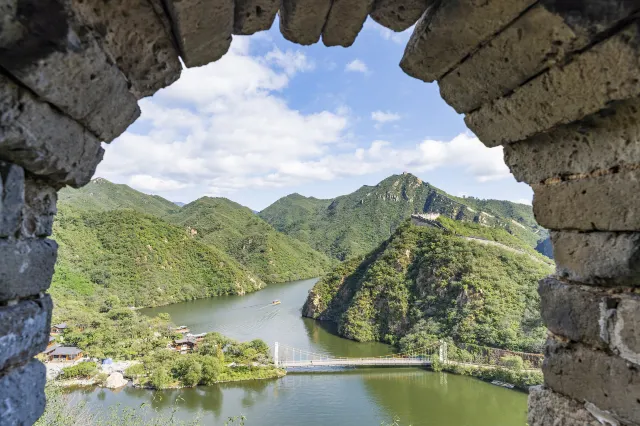
Key Features
Submerged Wonders (Viewable, NOT swimmable):
Best For: Niche Experiences
✓ Unbeatable For: families (gentle lakeside walks), underwater archaeology buffs.
✗ Disappoints If: Seeking high-altitude panoramas or long hikes.
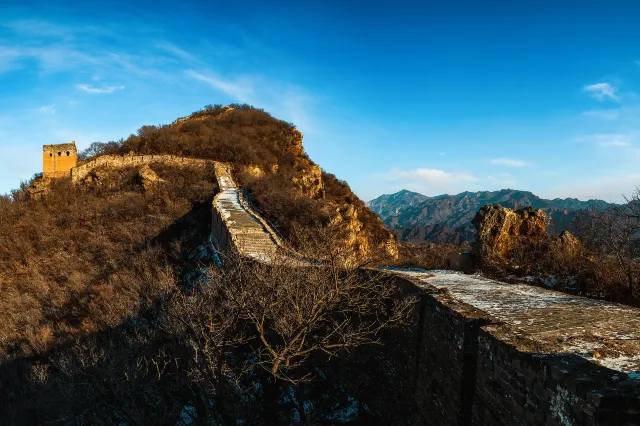
Simatai stands apart as the only Great Wall section legally open at night—a UNESCO World Heritage site where Ming Dynasty battlements fuse with avant-garde light art. By day, raw unrestored grandeur; by night, a luminous timeline where past and present coexist. Its 1358 CE construction under General Xu Da showcases military genius:
Vertical Warfare: Towers cling to 45-degree cliffs—"Heavenly Ladder" (Tower 10–12) requires hand-over-hand climbing.
Night Views: Since 2014, thousands of LED lanterns recreate beacon-fire ambiance without damaging heritage (certified by ICOMOS).
| Distance | 140 km NE of Beijing Drive: 2–2.5 hrs |
| Public Transportation | Official Shuttle: Dongzhimen → Gubei Water Town → Simatai Great Wall |
| Daytime | 8:30 AM – 4 PM |
| Nighttime | Apr-Oct: 5:30 PM – 10 PM Nov-Mar (Fri/Sat/holidays only): 5:00 PM – 9:30 PM |
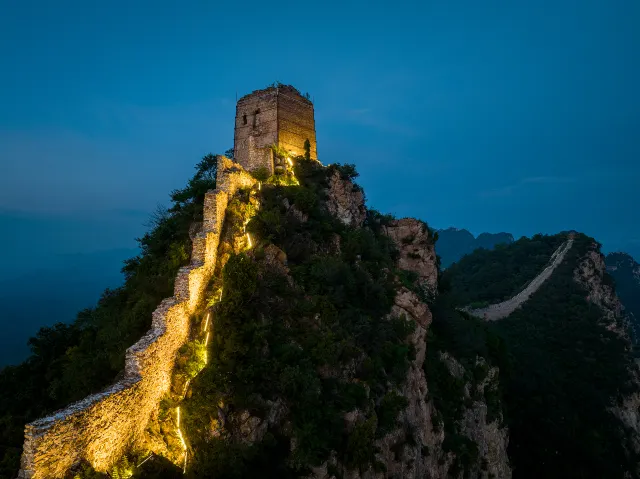
Key Features:
Best For: Adventure Seekers
✓ Perfection For: Photographers, hikers, adventure-seekers, history buffs.
✗ Avoid If: Fear of heights (exposed drops) or mobility issues (steep, uneven steps).
The Great Wall of China, spanning an awe-inspiring 21,196 kilometers (13,170 miles), is more than a monument—it’s a mosaic of history, engineering, and natural beauty. From Badaling’s bustling watchtowers to Jiankou’s wild ruins, Mutianyu’s family-friendly trails to Simatai’s glowing night paths, each of the seven Beijing sections offers a unique window into this UNESCO marvel.
There’s no “best” section—whether you seek serene lakeside views at Huanghuacheng, thrilling hikes at Jinshanling, or historical depth at Juyongguan, your perfect adventure depends on your dreams and expectations. You’re ready to choose your path. So, lace up your hiking boots, pack your curiosity, and explore one of the world's greatest marvels —spring blooms or autumn hues await!
Trending Travelogues
Popular Attractions
Popular Ranked Lists
Popular Destinations
Recommended Attractions at Popular Destinations
About





Site Operator: Trip.com Travel Singapore Pte. Ltd.






